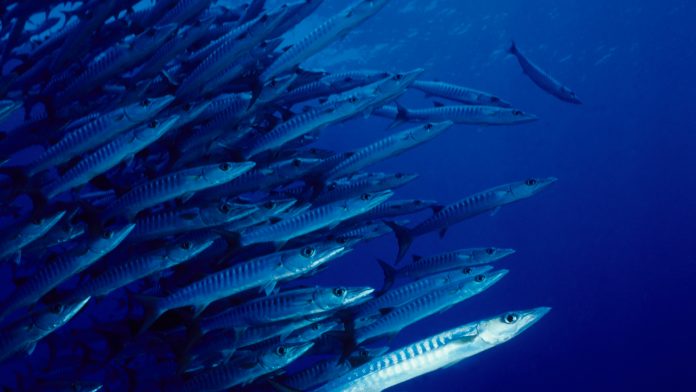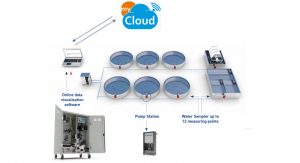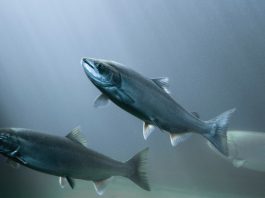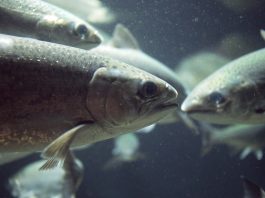The Blue Unit solution to fish farm data stands to revolutionise performance in the aquaculture sector through innovative fish farm data management.
Blue Unit’s business purpose is to generate and transform enormous amount of important, raw data collection on the fish farm into meaningful and useful information, and to co-operate with farm management in order to improve fish farm performance.
The Blue Unit solution
The tool behind this mission is a central measuring machine, a Lab Station, a Cloud Solution, many years of experience from working in fish farm data management around the world, and an analyses and visualisation of the data.
To succeed in this mission, the data is provided by our Lab Station, which consists of a control system and several sensors. The control system ensures the execution of an automatic sequence, in which key water parameters are measured at up to 12 different locations on the fish farm.
Data is sent up to the Cloud. This process is performed fully automatically 24/7 with no human intervention. This means that data collection is carried out very frequently, registrations are made via the same sensor, and the method is performed uniformly for all registrations.
Data in The Cloud is stored in a database and can be forwarded to the customer’s own SQL-database for their own use. Making global KPI’s for benchmarking means that all data is anonymous. Blue Unit’s business is built on trust and credibility, without which the business would fail.
A shared learning experience
The Blue Unit Cloud solution systematically aggregates and studies multiple fish farm data results together to uncover the complex biological and chemical interactions that occur within recirculation aquaculture system farms, RAS-farms. This establishes a platform for a ‘shared learning experience’ from which Blue Unit can draw upon to deliver the most powerful fish farm support ever seen.
To convert information into actionable insight on a fish farm, The Blue Unit Solution delivers added value by:
- Visualisation of data on a large central screen, a PC, and/or a mobile device;
- Dashboards on a hosting site;
- Local KPI’s with trend curves;
- Global KPI’s to benchmark a customer with similar designs;
- Shared information for all employees on a farm to gain knowledge and share the same language;
- The ability to put the data into the customer’s own reporting systems;
- Access to experienced knowledge and customised analysis;
- Scheduled milestone meetings during a batch to ensure data analysis and agree on improvement actions; and
- A telephone hotline.
Advantages
This novel information combined with specific analysis and experienced consulting leads to completely new knowledge about challenges in different farm designs and how to manage these issues.
Fish farm employees who are responsible for water quality can perform their job remotely, as has been seen during the COVID-19 pandemic where, during this extreme situation, many have worked from home and yet were still able to analyse water quality.
In a larger co-operation, it could be possible to centralise the competences regarding water quality. The work on observation and analysing water quality can be managed from a group department in a central location. This department could follow and analyse the trends on water quality for several fish farms. The department could also guide operational personnel on the many different fish farms without being present.
Future possibilities
One future possibility will be to manage water quality during breeding a batch on a land-based fish farm. However, the data can also be input to a larger analysis. This will enable customers to analyse data from the entire supply chain – from eggs to slaughtered salmon. This way, the customer should be able to find the best possible match for breeding fish, given the known factors like the RAS-design, egg supplier, feed, etc. We hope that, one day, this will become a reality.
Henrik Hamann Juel
CEO
Blue Unit A/S
+45 5115 8102
hhj@blue-unit.com
www.blue-unit.com
Please note, this article will also appear in the third edition of our new quarterly publication.










